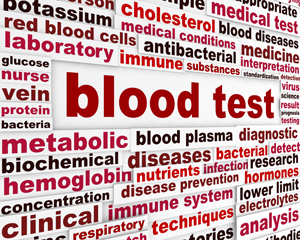Test Talk: Cortisol
Collection requirements and diagnostic value
by Dennis Ernst • February 13, 2019

Cortisol is a hormone produced and secreted by the adrenal glands, which sit atop each kidney. It has many functions, but mostly plays a role in metabolizing proteins, lipids, and carbohydrates. They hypothalamus and pituitary gland in your brain tells the adrenal glands when to release cortisol.
Normally, the level of cortisol in the blood peaks early in the morning, then declining throughout the day. It is at its lowest level about midnight. This is referred to as a "diurnal variation." Cortisol is one of the few tests a physician orders that rises and falls according to the time of day, which is why phlebotomists should draw cortisols at the time the physician requests. Usually 8 a.m. Cortisols drawn randomly are not of much diagnostic use.
This gets a little complicated, but stay with it. When the hypothalamus senses the patient's blood cortisol level is falling too low, it secretes corticotropin-releasing hormone (CRH), which signals the pituitary gland to produce ACTH (adrenocorticotropic hormone). ACTH stimulates the adrenal glands to produce and release cortisol.
So when physicians order a cortisol level, it's to diagnose adrenal insufficiency (Addison's disease). It can also be used to help diagnose Cushing syndrome, a condition associated with excess cortisol. When an abnormal level is reported, the physician will likely order additional testing to determine exactly why it is abnormal, such as CRH and/or ACTH, which would identify the status of the hypothalamus and pituitary gland.
Cortisols can be tested on serum or heparinized plasma. Tubes should be centrifuged within 2 hours as a general practice, but cortisols drawn into heparin tubes are stable at room temperatures for six hours uncentrifuged.(1) When drawn into serum tubes, stability is up to 48 hours.(1) After centrifugation, serum or heparinized samples have a stability of 48 hours.(2)
References
- CLSI. Procedures for the Handling and Processing of Blood Specimens for Common Laboratory Tests; Approved Guideline—Fourth Edition. H18-A4. Clinical and Laboratory Standards Institute. Document H18-A4 Wayne, Pennsylvania 2010.
- Wu A. Tietz Clinical Guide to Laboratory Tests---Fourth Edition. Elsevier. St. Louis, Missouri. 2006.
Related Posts and Information
overall rating: my rating: log in to rate
cortisol YouTube requirements test tube
